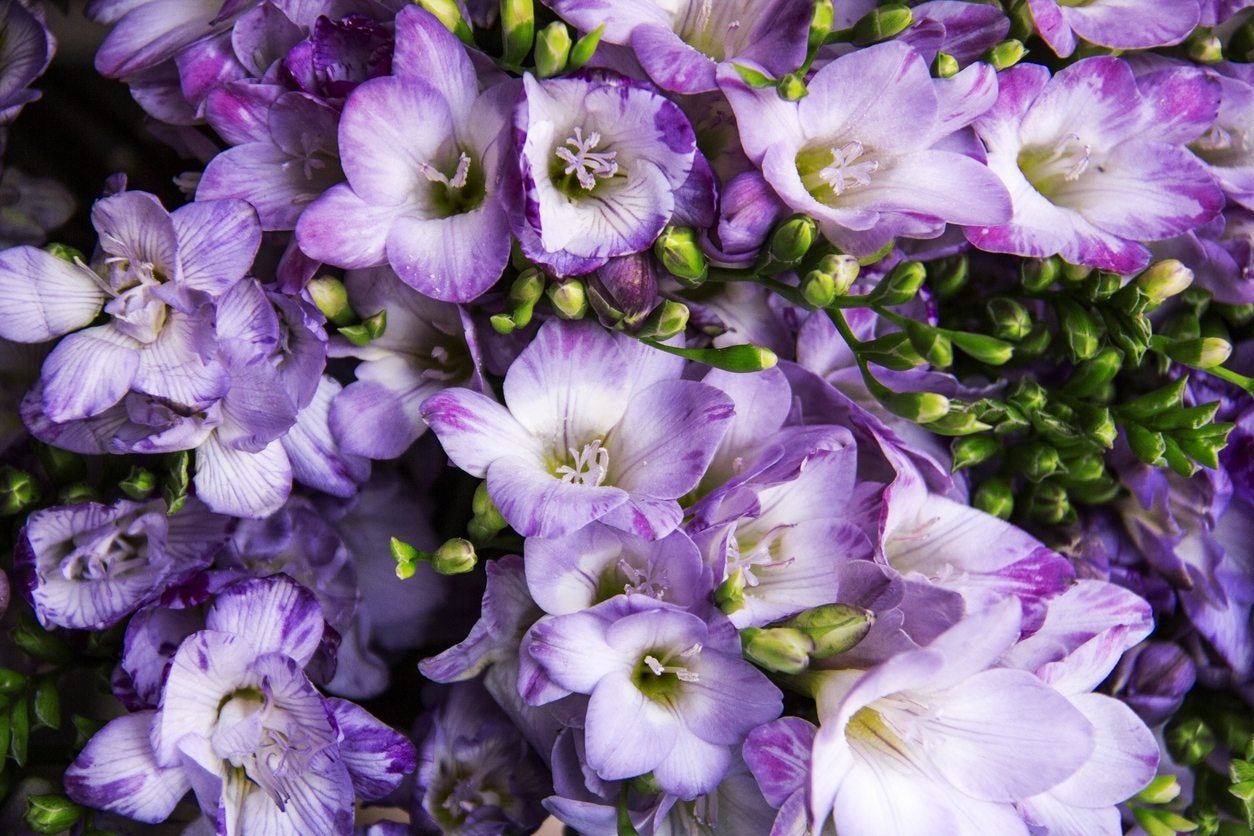No Flowers On A Freesia: How To Get Blooms On Freesia Plants


The delicate, fragrant freesia is an outstanding corm with its colorful blooms and erect foliage. When a freesia won't bloom, it can be frustrating but there are several possible reasons for this, and many of them can be easily corrected. No flowers on a freesia may stem from cultural, situational or physical causes. Some tips on how to get blooms on freesia can help you get on your way to growing these scented beauties.
Why Won't My Freesia Bloom?
You've done everything right. You planted your freesia corms in well-draining soil, in full sun in spring, and they didn't experience any hard freezes. Now you are asking, "Why won't my freesia bloom." Freesias are native to South Africa and prefer things hot and dry. In some regions, the conditions after planting are extremely wet due to spring rains. This can slow or even stop sprout production, but it may not be all that is going on. Freesias require conditions like those in their native region for best flower production. The corms are not reliably hardy below USDA zone 8. They can be grown in zones down to 6 but will need to be lifted or planted in containers to protect them from winter temperatures. It is actually a cool weather plant that needs nighttime temperatures of 40 to 55 degrees Fahrenheit (4 to 13 C.) and 50 to 70 Fahrenheit (10 to 21 C.) during the day. The cooler temperatures help the plant form flowers, but in the north plants should be started indoors or in a greenhouse where they are protected from any freezes. In areas with extreme year-round heat, a freesia won't bloom because it needs that cold experience to break dormancy.
Foliage but Freesia Not Flowering
If you have greenery, you are half way there. Established plants that develop foliage but not flowers may simply need to be divided. Dig up the corms and separate them, discarding any discolored or diseased material. Plant corms 2 to 3 times their length. Planting too deeply can also cause no flowers on freesia. The corms should also be fertilized annually. Use bone meal or a high potassium feed in spring, once foliage is evident. Feed plants every two months during the growing season but suspend fertilizer in fall. Lack of nutrients is a common cause of freesias not flowering. You should also let the foliage persist after the flowers have faded so the corms can store solar energy to fuel the next season's growth.
Cultural Causes of Freesias Not Flowering
Freesia plants are slightly fussy about their site and care. If you are still wondering how to get blooms on freesia, make sure they are in a sunny location in well-draining soil. Add a bit of fine grit to areas that do not percolate well. Once planted, freesias should be well watered but not again until sprouts appear. Corms usually sprout in one to three months depending upon site and variety. In containers, use a bulb planting mixture that will have all the necessary texture and nutrients for plant and flower formation. Northern gardeners, especially, should start plants indoors where ambient temperatures are warm and then move the containers outside when it is evenly 60 degrees Fahrenheit (16 C.).
Sign up for the Gardening Know How newsletter today and receive a free copy of our e-book "How to Grow Delicious Tomatoes".

Bonnie Grant is a professional landscaper with a Certification in Urban Gardening. She has been gardening and writing for 15 years. A former professional chef, she has a passion for edible landscaping.